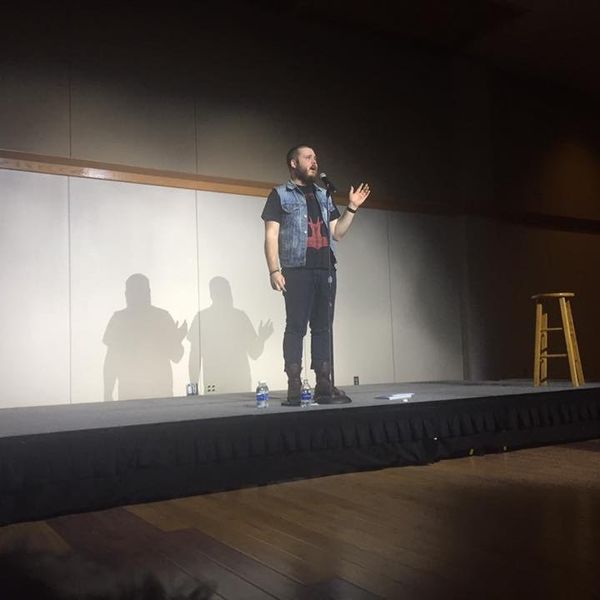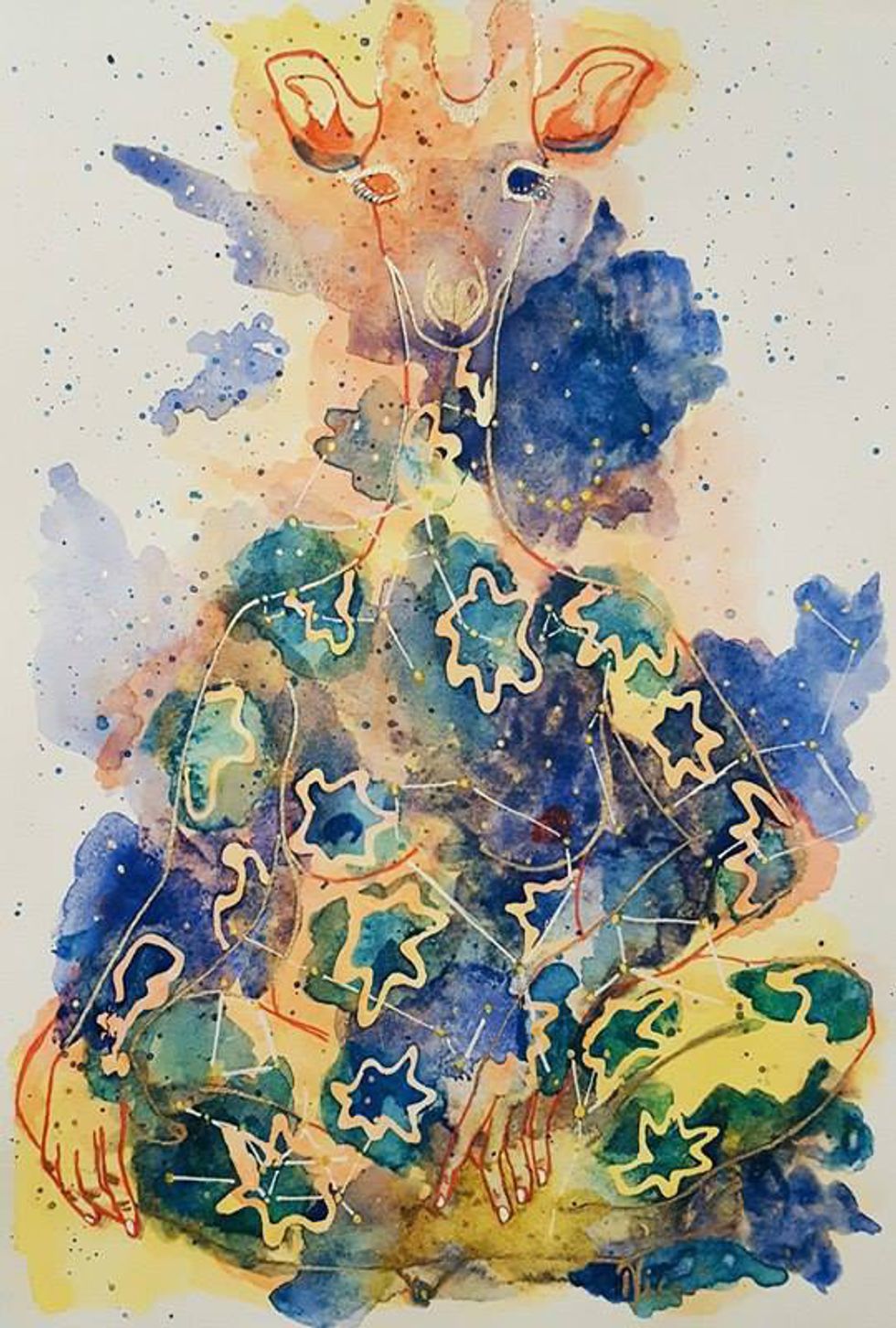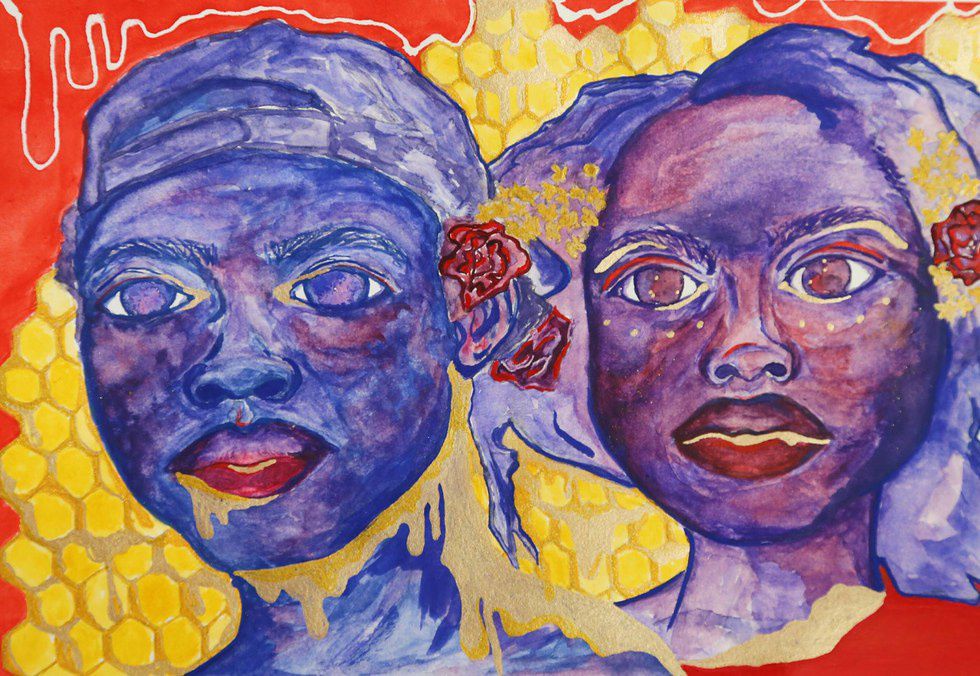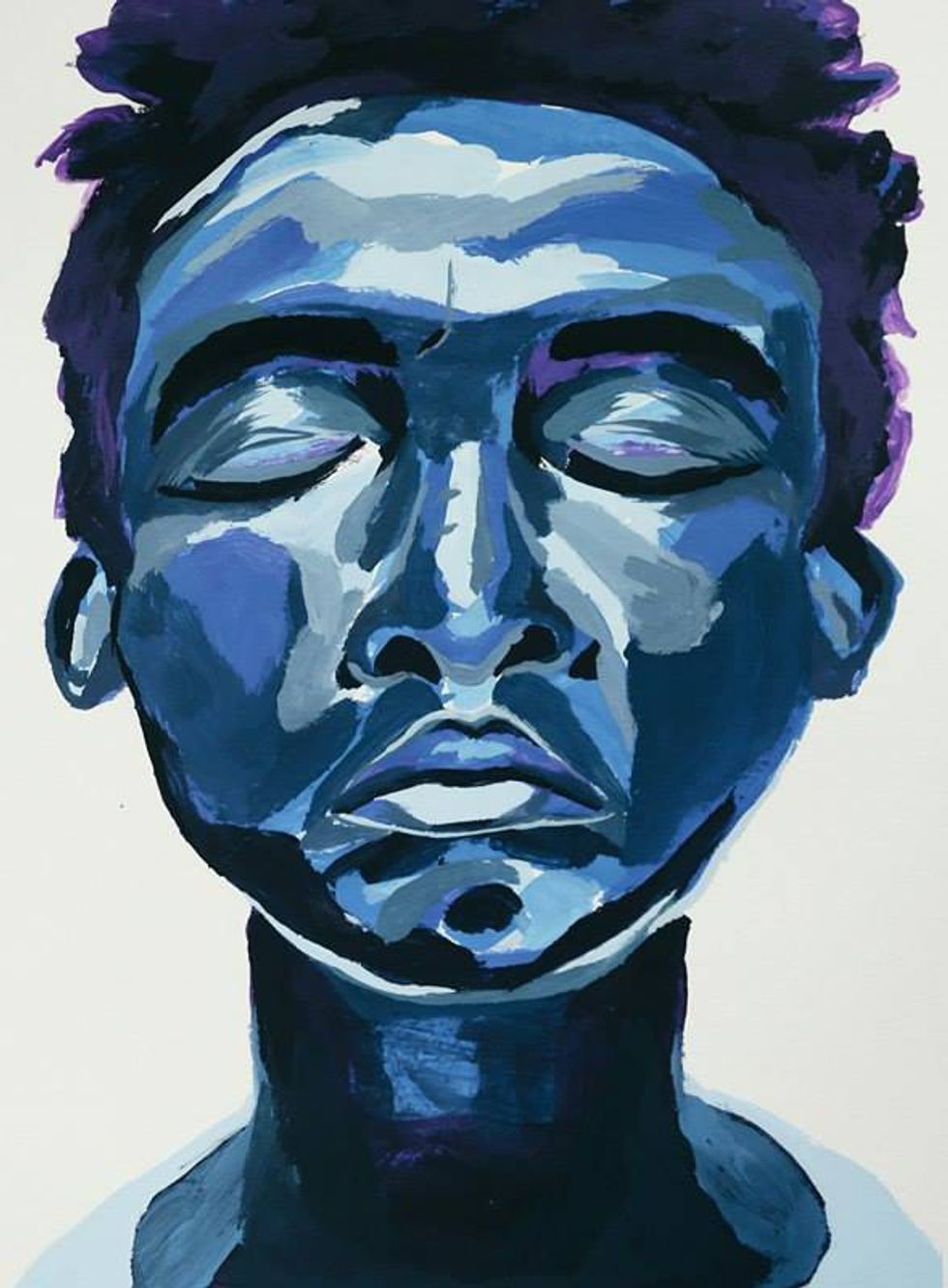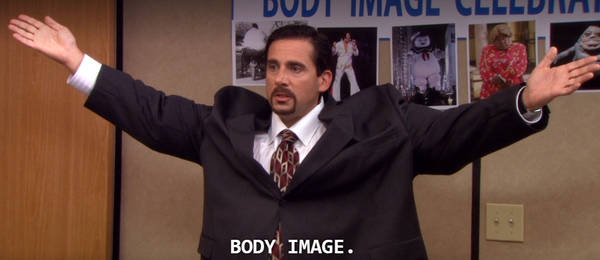Catching your eye out of a sea of bold colors and soft shapes, the subjects of Amber Kincade’s intensely expressive portraits emerge with a lifelike presence through watercolor, gouache, and acrylic pieces. Finding inspiration in everything from zine photography series to spiritual mythology, their works can be both deeply personal and aesthetically simplistic, celebrating beauty for beauty’s sake, while also communicating identity and self-reflection.
“I think my art reflects that desire to belong. I create visual mythologies about loneliness, solitude, togetherness and identity. Creating mythologies about myself and my place in the world has helped me to cope better with some of the anxieties of being human.”
An Americorps volunteer and local activist, Amber Kincade graduated from college last spring with two degrees in Linguistics and French, and have since gone on to become a primary school French teacher at the Children’s Center in Little Rock. They’re currently pursuing a TESOL (Teaching English to Speakers of Other Languages) certificate while also working on their art, helping the community, and teaching.
“An average day in my life would be at the Children’s Center, wearing about six different hats: surrogate mother to preschoolers, teacher, friend, therapist, story-teller and custodian,” says Amber, noting that they enjoy doing work that relates to their studies. “I’ve been doing this since September though, so the costume changes are becoming a lot more fluid.”
One of the driving themes behind many of their pieces is a need for storytelling and “self-mythicizing” as methods of healing trauma, insecurity, and fear– an idea that took root in Amber’s mind earlier last year as a result of their self-reflection on their own experiences with loneliness and the desire to belong.
“I kind of developed this idea earlier last year about ‘mythicizing the self’. Self-mythicizing is creating a mythology about the self in order to nurture a space for self-confidence and self-worth,” explains Amber. “I think I have dealt a lot with loneliness in my life or feeling left out. I began to create a version of myself that was powerful, could manifest my dreams and desires, could heal others and myself, could rise above feelings of not belonging, and etcetera.”
In Self as Mythology: Gaseous, this version of Amber, as depicted in their self-portrait, appears to exist both inside and outside of their corporeal form, wafting in shades of gold, orange, and peach through the outline of their body, which sits cross-legged and has the head of a giraffe. Within Amber’s form are expanses of dark blue dotted with stars and constellations and the spots on their body stand out in shades of green and turquoise. The “gaseous” and nearly incorporeal form that Amber possesses in this piece is achieved through using a wash and blending and dripping watercolor paint to form colors that have depth and seem to flow seamlessly into one another.
“I created an earth mother version of myself, and it stuck. The confidence stuck, and further, I did begin to heal, and more intentionally–heal others.”
The themes of loneliness, solitude and particularly the desire to belong that crop up frequently in Amber’s works proves even more personal when taking a look at their own history as a “military brat”.
“Sometimes I feel like the Mr. Krab meme, like a blur in the middle of life. Sometimes I can’t clearly mark breaks in the stages of my life—like I’m always moving. And yet, I often feel like I’m not doing enough. I have been through a lot in life, but that seems too obvious.”
Children with parents in the military find themselves “restarting” many times throughout their life as they move every few years, having to settle into new cultures and forming completely new friendships and social networks in unfamiliar locations. Oftentimes these relationships are temporary and can be cut short unexpectedly when families are assigned to move. Amber explains that moving around a lot when they were young has not only affected how much they currently like to travel, but also their interpersonal growth and relationships with others. A military brat myself who moved here two years ago when my dad was stationed to Little Rock Air Force Base, I understood completely when Amber described their anxieties about making and maintaining friendships, their desire for inclusion, and how their itinerant lifestyle contributed to these thoughts.
“...I have moved a lot in life and that moving has also informed how much I travel,” Amber explains. “With that said, I’ve noticed as an adult that my friend-making habits aren’t the same as some of my friends who have been in the same place for a long time. I tend to be very confessional and quick to make plans. I find myself wishing I had more close friends a lot and wondering why I don’t. I think that really paints a lot of my efforts and personality at present. I strive to make others feel like they belong, can belong, and to make understanding of how I belong.”
Amber’s understanding of belonging and sense of identity are key aspects of the “storytelling” that they do through their art. Their artistic influences and subject matter, portrayed with a rich and emotional intensity, are celebrations of both the beauty of others as well as Amber's own appreciation of beauty.
“The twins in Honeycomb Twins are two people from Jasmine Weber’s photos, Black Vulnerability, and the man in Blue Man is Sinkane, a Black musician. I chose these photos simply because they were beautiful.” Amber continues, “I know it sounds cliché, but I really do love and appreciate beauty simply because it is beautiful. I seek out beauty in my life and strive to be surrounded by it in as many ways as I can be. I feel most comfortable and [in] most relief while in beauty.”
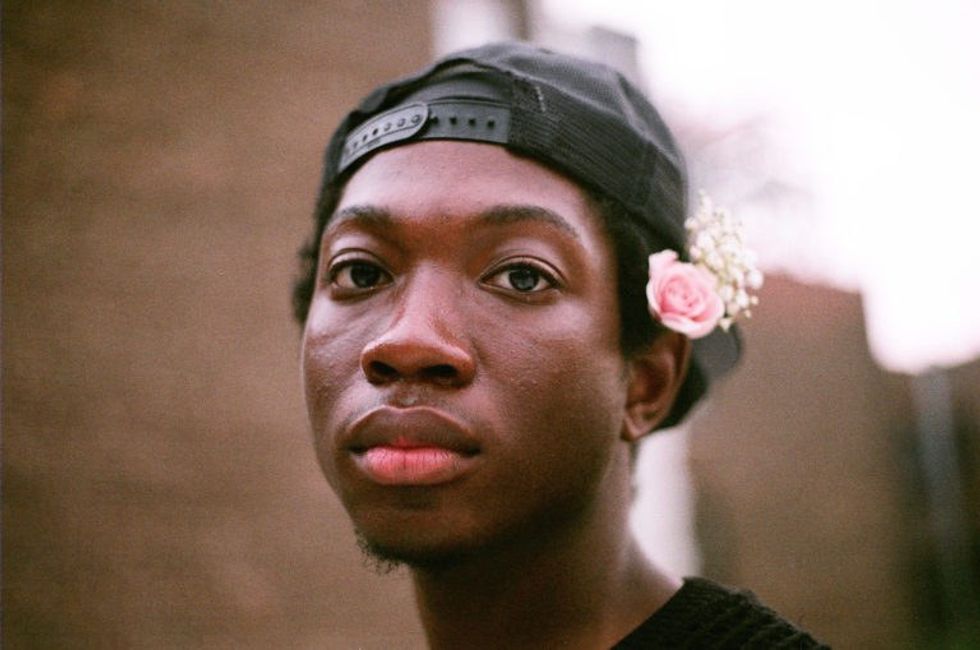
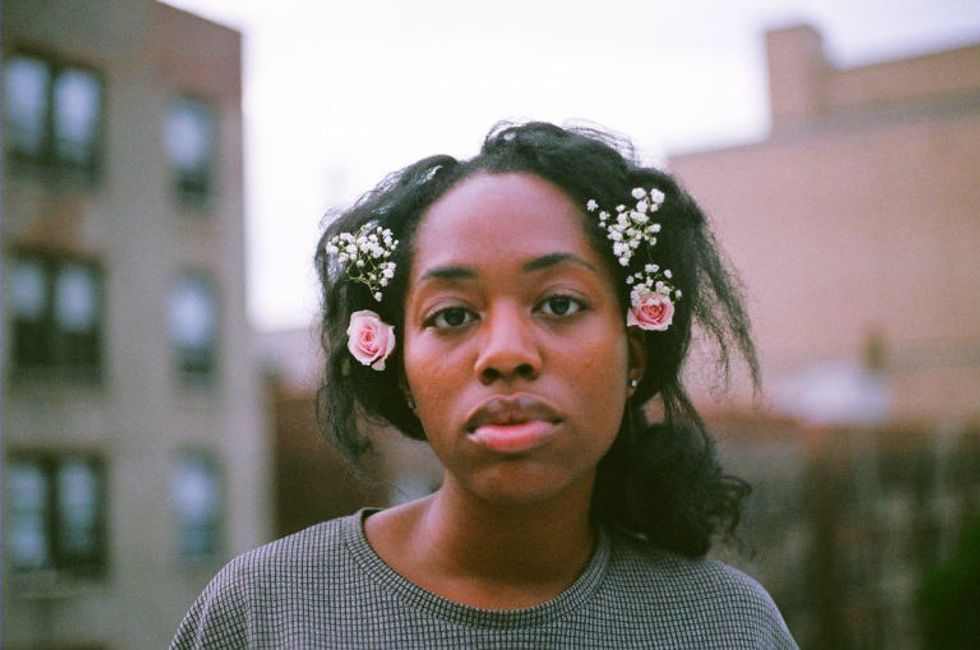
In Blue Man, Amber uses layers of stylized shading and a monochromatic palette to portray the musician Sinkane in an intimate portrait, his eyes closed and his features highlighted by a raking light from above that casts deep shadows across his face. Like Blue Man, Honeycomb Twins was inspired by photographs that caught Amber’s eye due to their beauty and their empowerment of black identity.
“I also chose them because they’re Black and because the photos of them communicated to me the magic and fantastic qualities of being Black.” The photo that inspired Honeycomb Twins is part of Jasmine Weber’s “Black Vulnerability” series, which can be found in the intersectional feminism and fashion zine, Polyester Magazine.
“The original photos were soft and immersive, like sitting in a creek in mid-summer, like sitting on a porch and smoking while the sun goes down. They just felt like magic, and I knew I needed to get them on paper.”
As Amber’s identities and experiences are constantly changing and evolving, so is the world around them. They discuss how both have the capacity to influence their art, especially with the current tumultuous political regime in America.
“I don’t know that I often think about myself creating art under the current regime. Part of mythicizing myself gave me a sense of control and power in my life,” Amber responds in a discussion of the role of art during political and social tensions. “I am definitely not saying that I am somehow impervious to real-world policy changes, but I am saying that how I respond to it and engage it in everyday life is perhaps more muted than some of my peers. I focus very much on the interpersonal world: on bonds with lovers, family, and friends.”
“It’s increasingly important to me to take care of my community, which I believe and know I can do through creating—whether it’s painting, organizing or music. I think that the art has always been more important. It is an otherworldly calling to translate our experience to others."
Though Amber’s explanations and dialogue indicate a confident and experienced artist, they also reflect someone who is still crafting their artistic style and establishing a sense of identity in the art world.
“Everything I’ve done so far definitely feels like mine, but I haven’t been able to really pin down what about it exactly belongs to me. I think impressionism has definitely influenced my art and my vision. I really like the fluidity of the style; it’s always made sense to look at.”
“I’m still studying, so I can’t really name-drop artists at this point in my journey.” Amber makes it clear that they still consider themself a beginning artist, though their art emanates a complexity and richness that may appear to indicate otherwise. “I can say that from what I’ve seen in my life, the art that has felt closest to me has been work with bold jewel tones or warm earth tones and quick, confident strokes. I think it is important to study detailed work and be capable of creating it, but I feel more at home with work that implies detail and is still powerful and relieving to look at.”
Amber’s vision for their future involves more than just personal growth and development, but also community activism and the strengthening of their relations with other local artists and artists with similar histories and struggles. “I think I’m an art baby right now, but I really hope to keep creating and to network with other LGBTQ artists of color, especially in Little Rock.”
“I really want to create a physical space for artists like us to get together, workshop, network and display our work in a serious way. I think Little Rock can look out for that soon.”
Amber Kincade has stated that they definitely plan to pursue art as a career and have several specific goals in mind for their development as a creator. “I have so many other skills and abilities, but art feels like the least amount of work for the highest turn-out. That’s not to say it isn’t work though; it is,” Amber clarifies. “I call it work when I’m doing it. I tell myself, ‘you have to work tonight’. It takes a lot of meditation and forgiveness to really do well.
Amber continues, “My short term goals are just creating more work that I feel specifically represents me, work that others would recognize as my work. I would love to do another interview like this in a year or so and see how some of my answers have changed, especially regarding what my work represents and motifs that run through my work. As far as long term, I’m looking towards gallery exhibitions, lectures, workshops and having all of the time, space and emotional support I need to make art.”
“I struggled very briefly with calling myself an artist, but ultimately decided it was accurate because I interpret the world artistically. I’m not only a painter, but a long time musician as well. I think the hype around being called an artist and who gets to be called an artist is pretty elitist and a low vibrational conversation. If you think you’re an artist, then so be it.”

